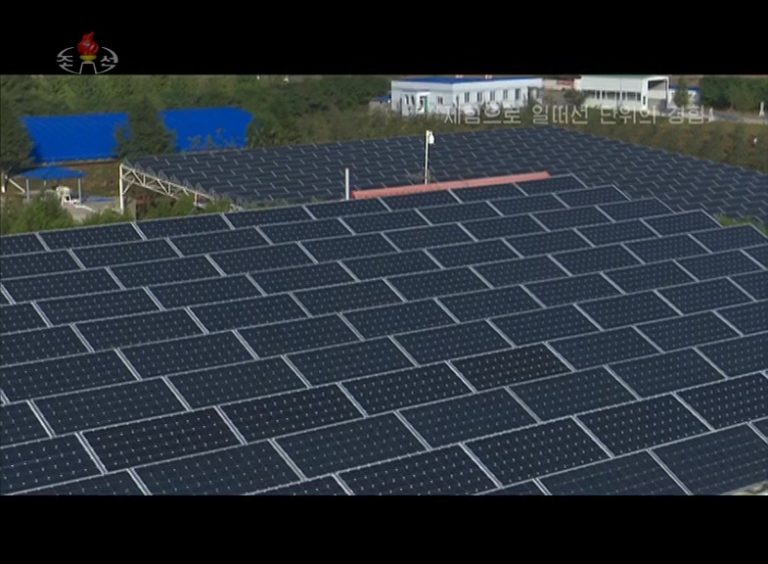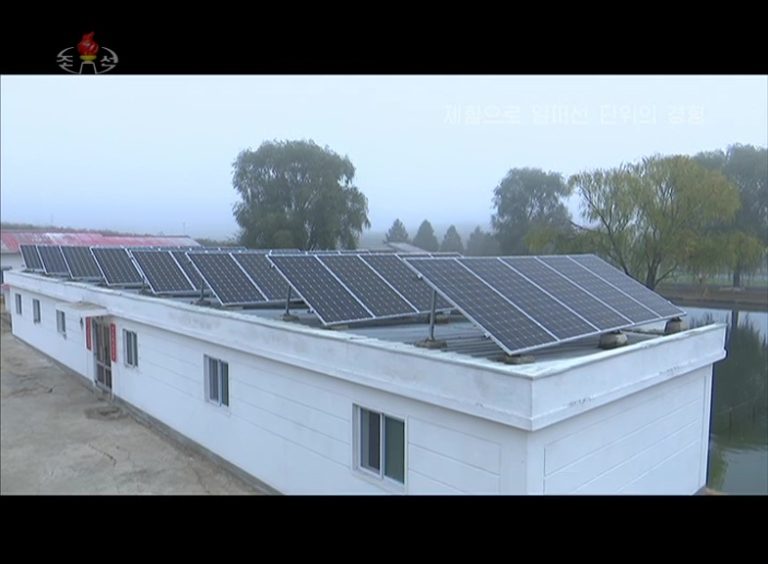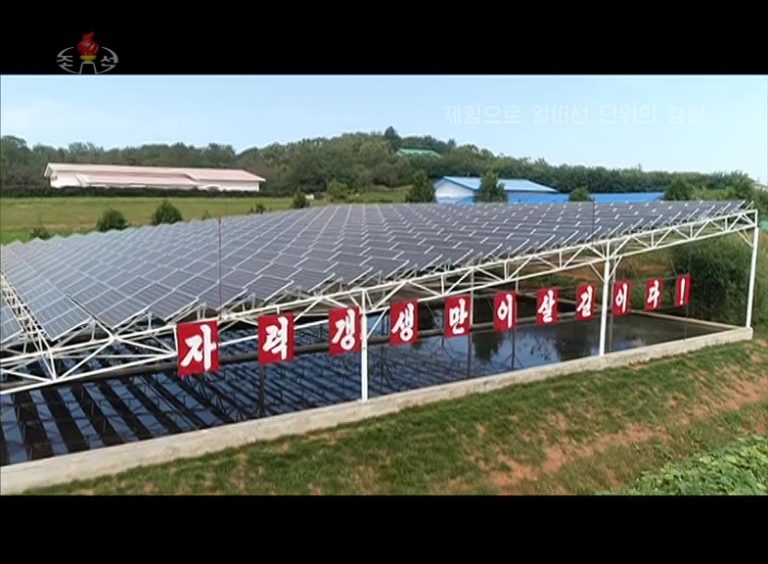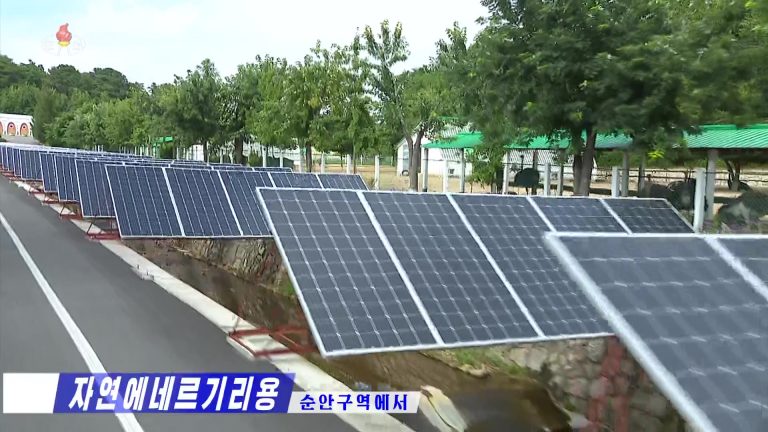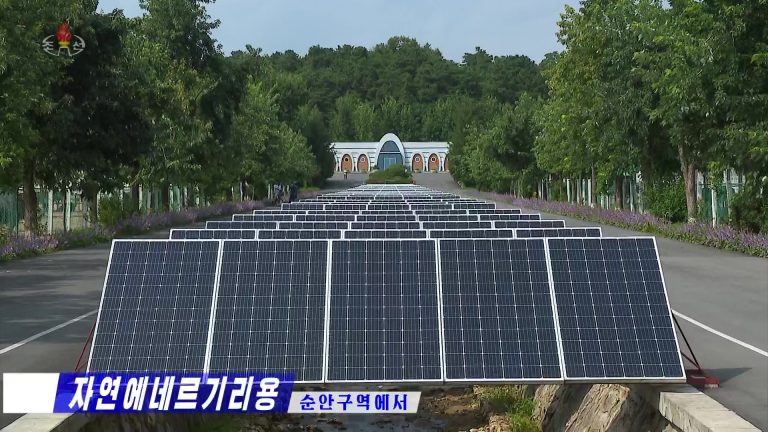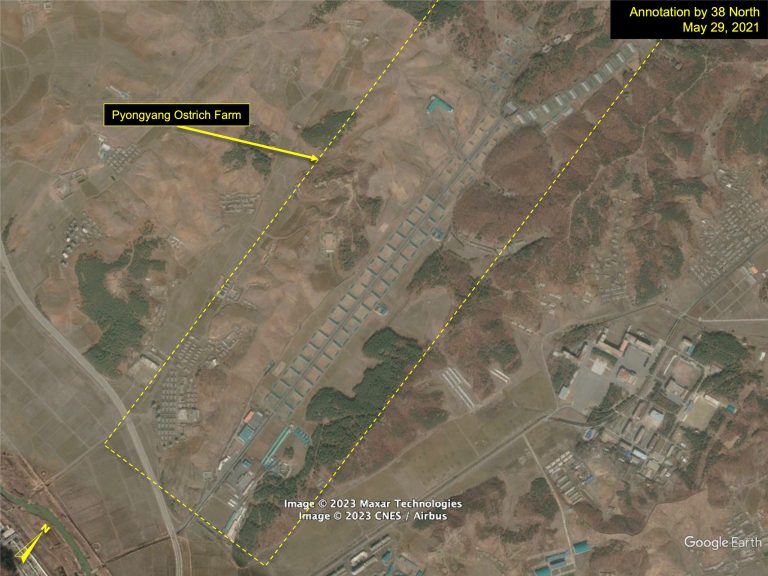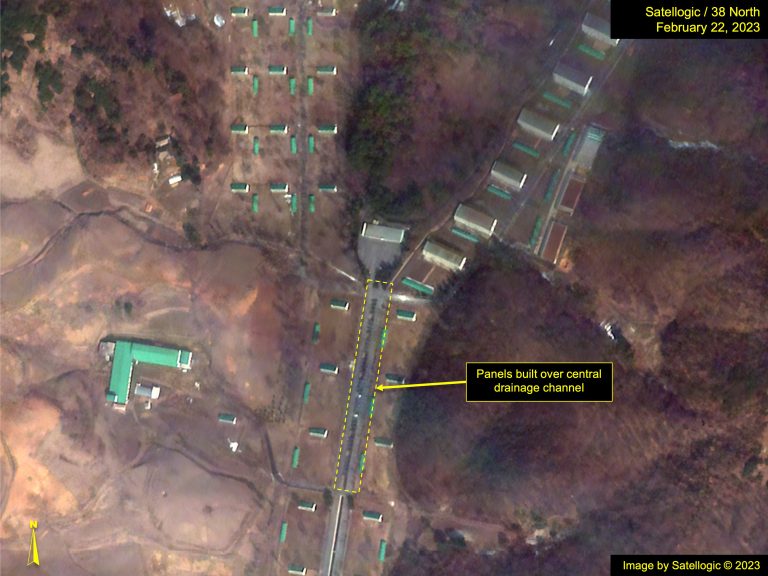North Korea’s Energy Sector: Solar in Agriculture
In this installment of our series on North Korea’s energy production, we will examine the use of solar energy in the country’s agricultural sector. Based on open sources, including satellite imagery and North Korean media, it appears that solar energy has become a common feature at larger farms, particularly livestock farms. This is especially true for farms built or renovated within the last few years. Select farms are featured below, including those that have large solar installations and/or have discussed solar energy operations in North Korean media coverage.
As discussed throughout this series, many of the solar installations began as a way to satisfy the electricity needs of the facility on which they were installed, but in recent years, attention has turned to connecting them to the grid so surplus power generation can be shared. It is also common for solar water heaters to be installed alongside solar panels on industrial buildings, providing hot water for washing and cooking.
At two new farms, the Kwangchon Chicken Farm and Unjong Pig Farm, solar arrays were included in the initial construction. The other farms listed here are older, dating back a decade or more, and solar has been added over the last few years.
Farming
Kwangchon Chicken Farm
The Kwangchon Chicken Farm (광천닭공장) features a 336-panel solar farm on the northern part of the facility. This is one of the newer chicken farms in North Korea, where construction began in May 2019.
Kim Jong Un conducted field guidance here in July 2020 during its construction phase, and state media reported he had taken direct charge of construction, as he has tended to do with other high-priority projects. Coverage of this visit emphasized how the farm was to be “a model in modernizing all the chicken farms across the country.” Solar panels appeared at this complex in May 2022, presumably under Kim’s direction. Given the stated importance of this farm to the country’s chicken farming operations, we would expect to see this feature on new farms of this nature.
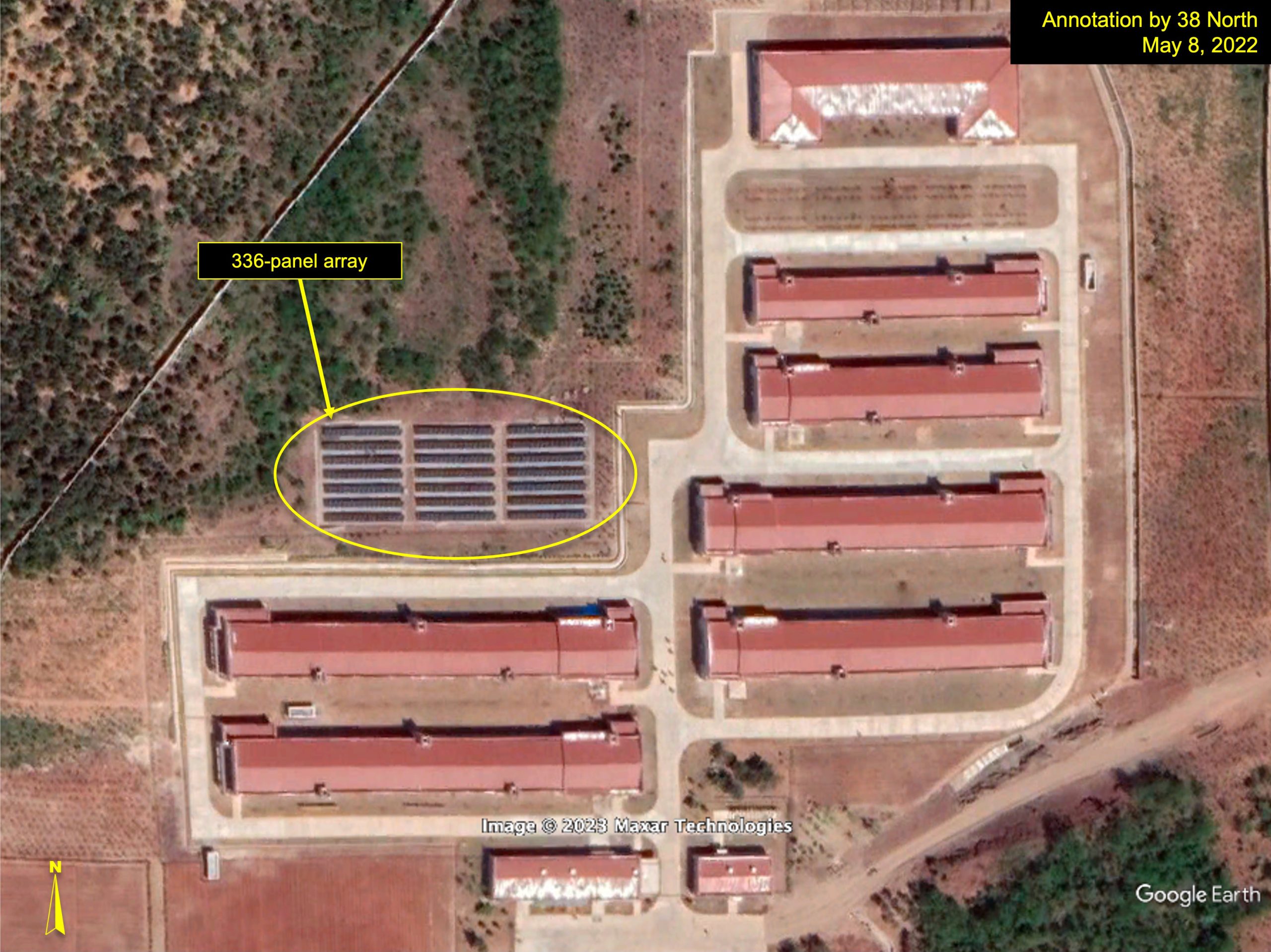
Unjong Pig Farm
The Unjong Pig Farm of the State Academy of Science (국가과학원 은정돼지공장) is one of North Korea’s newest meat production facilities, having opened in February 2021. According to state media, it utilizes modern technology that helps improve meat production. Like the Kwangchon Chicken Farm, it will serve as a model for similar farming operations in the country. On-site, there is a 154-panel solar farm.
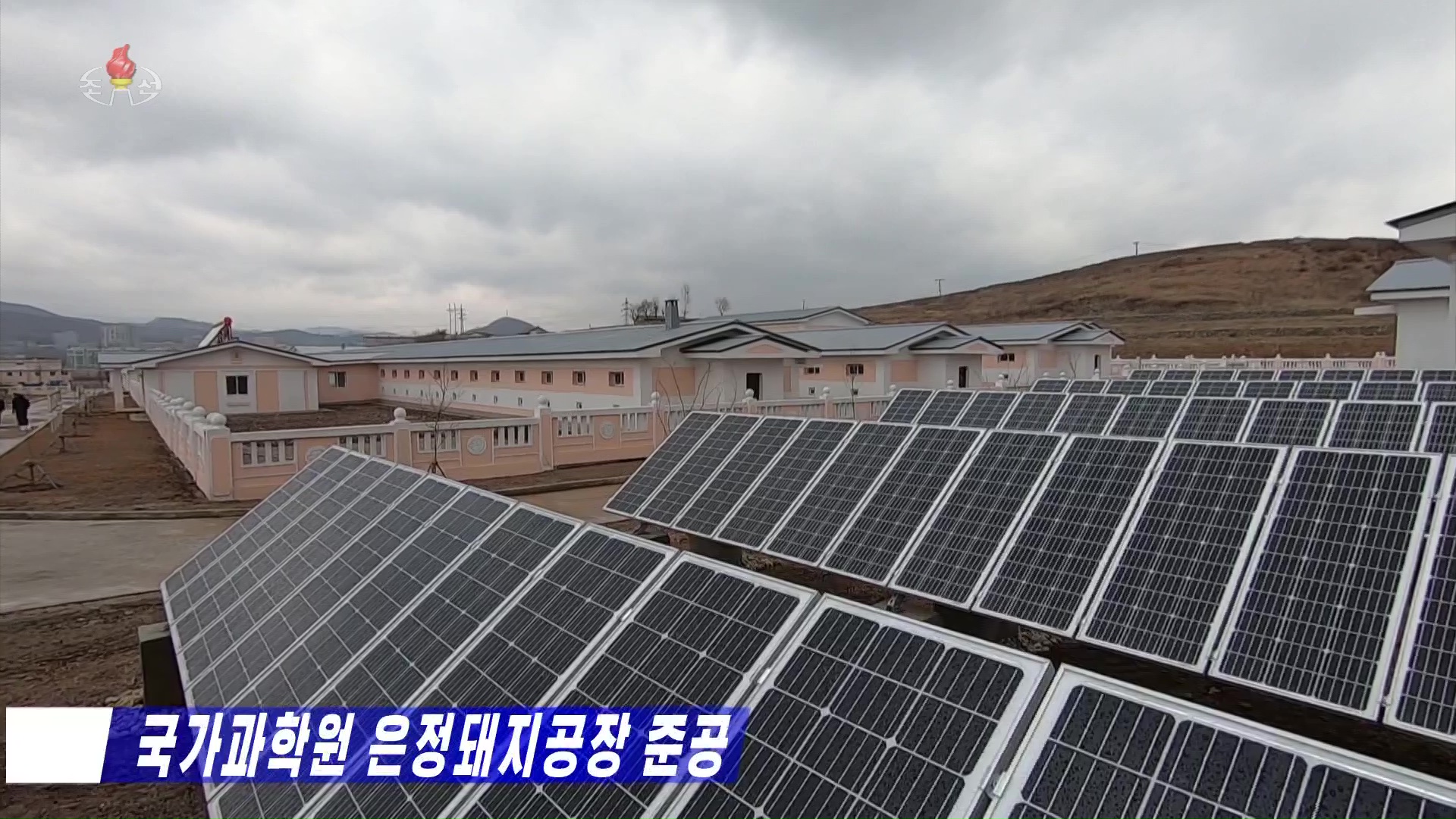
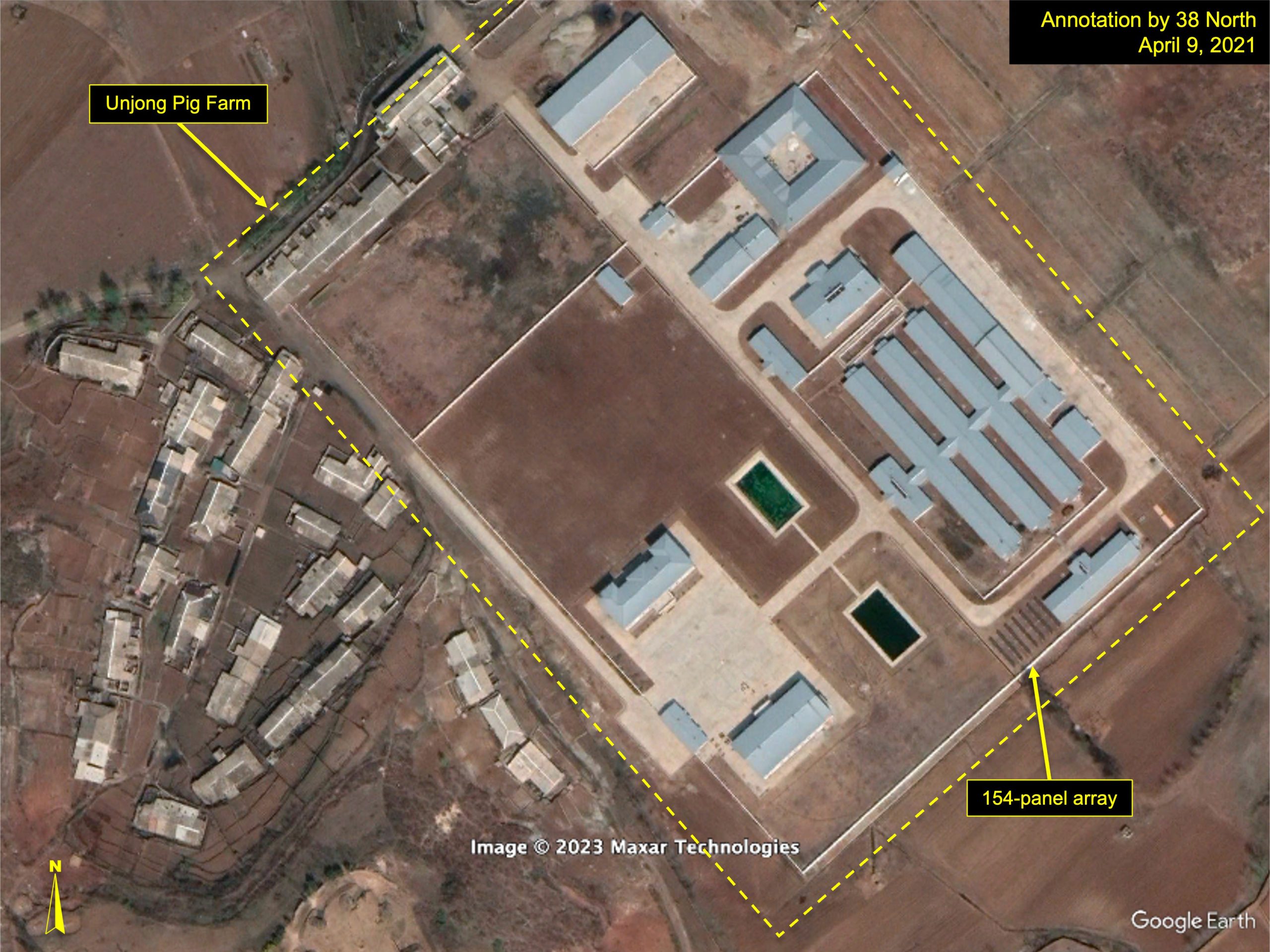
927 Chicken Farm
The 927 Chicken Farm (927닭공장) has three separate solar installations on site. The largest is a 450-panel array that sits elevated above a pond. Nearby is a 90-panel array, and a smaller set of 40 panels sits on the roof of an administrative building on the site.
The 40-panel array and an earlier 121-panel array were added sometime between October 2015 and October 2016, and the larger 450-panel array was added between February 2018 and November 2019. The 121-panel array was dismantled in 2022, and the current 90-panel array was constructed on a nearby building under renovation.
State television featured this farm in 2019 and showed the electricity being used for tasks such as lighting, heating of sheds and keeping electric well pumps operating.[1]
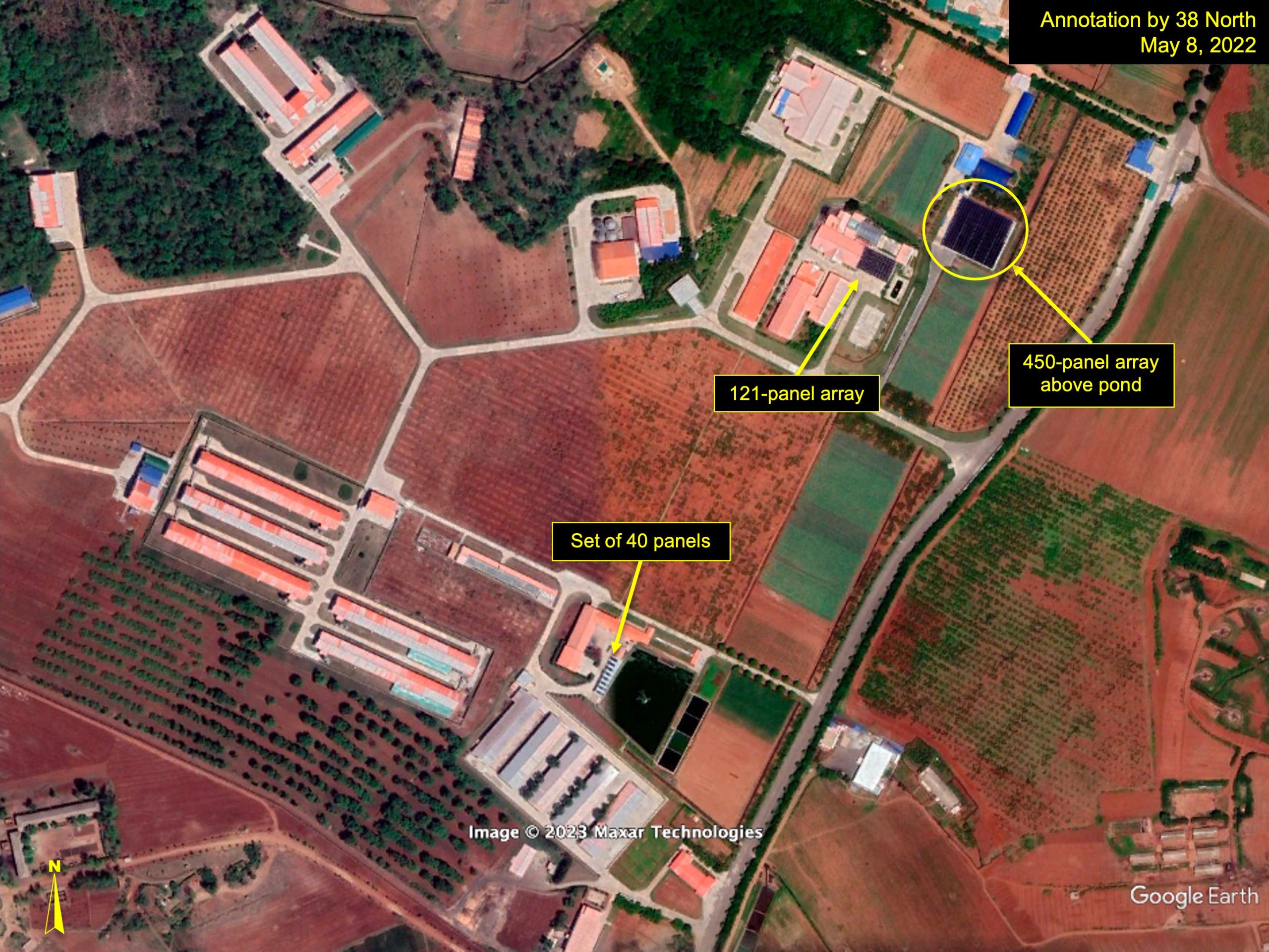
Farm 1116 Research Institute
The Farm 1116 Research Institute (1116호기지 연구소) on the outskirts of Pyongyang is one of the country’s centers for research into high-yield farming methods. It had previously been called the Seed Research Institute and was demolished and rebuilt in a project that began in April 2017.
It has two solar arrays on-site. A smaller array of 96 panels was constructed sometime between April 2017 and November 2019. Construction of the second, much larger array of approximately 1,000 panels began in November 2019.
There are two smaller farms within this campus operated by the Korean People’s Army (KPA).[2]
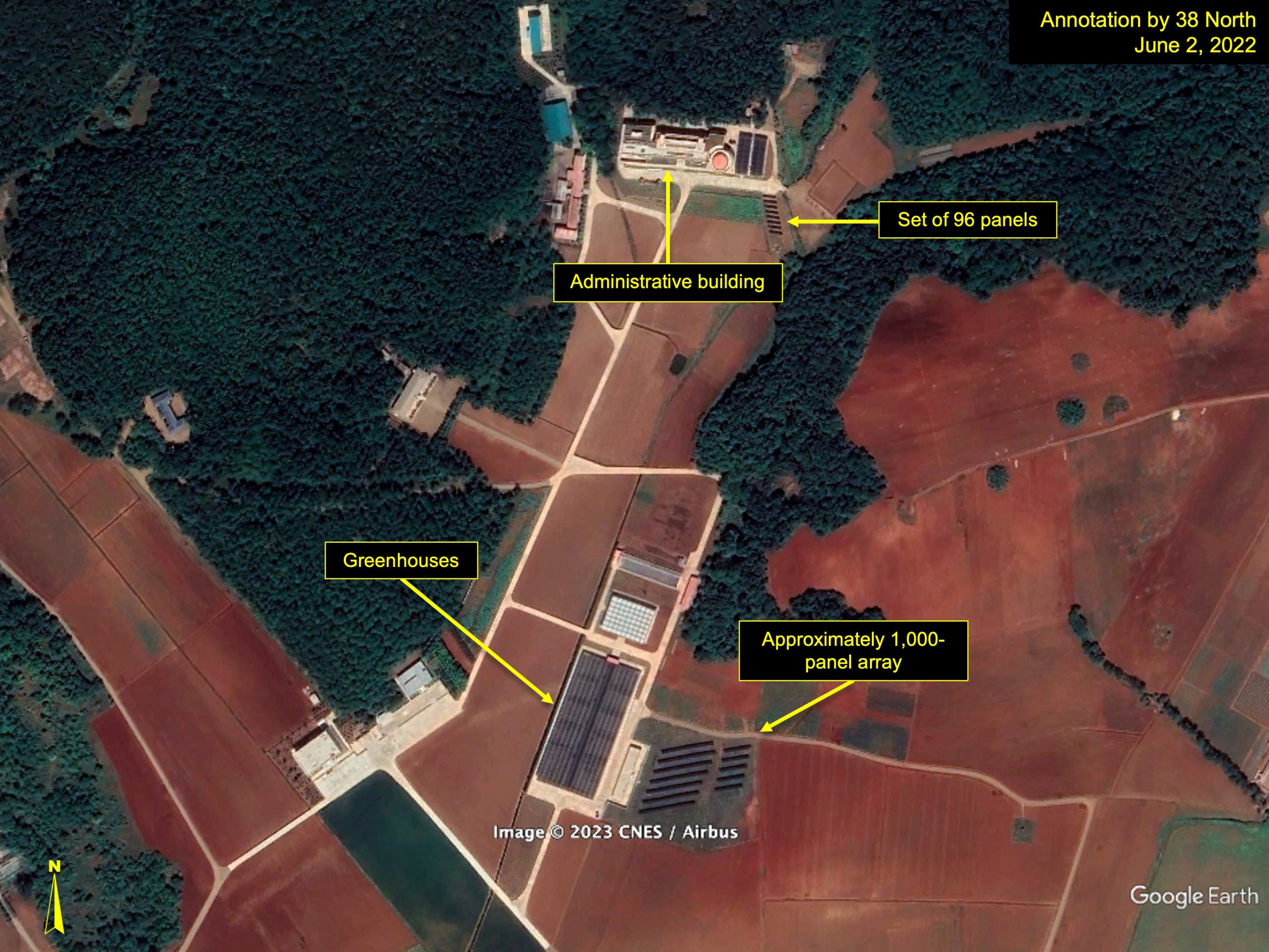
Pyongyang Ostrich Farm
Solar panels at the Pyongyang Ostrich Farm (평양타조목장이) in the city’s Sunan District are interesting for their use of space. The panels were installed between April 2019 and May 2019; each array is only five panels wide, and there are 37 others built over a central drainage channel at the farm. They cover only the first 200 meters of the two-kilometer-long channel, leaving plenty of room for expansion if ever desired.
In the next installment of our series on North Korea’s energy sector, we will examine solar installations constructed by citizens at their initiative.
- [1]
“제힘으로 창조한 재부 – 3중3대혁명붉은기 927닭공장,” Korean Central Television (KCTV), November 13, 2019.
- [2]
See “Kim Jong Un Visits Mushroom Farm,” NK Leadership Watch, July 16, 2013, https://nkleadershipwatch.wordpress.com/2013/07/16/kim-jong-un-visits-mushroom-farm/; and “Kim Jong Un Visits Farm,” NK Leadership Watch, September 13, 2016, https://nkleadershipwatch.wordpress.com/2016/09/13/kim-jong-un-visits-farm/.

